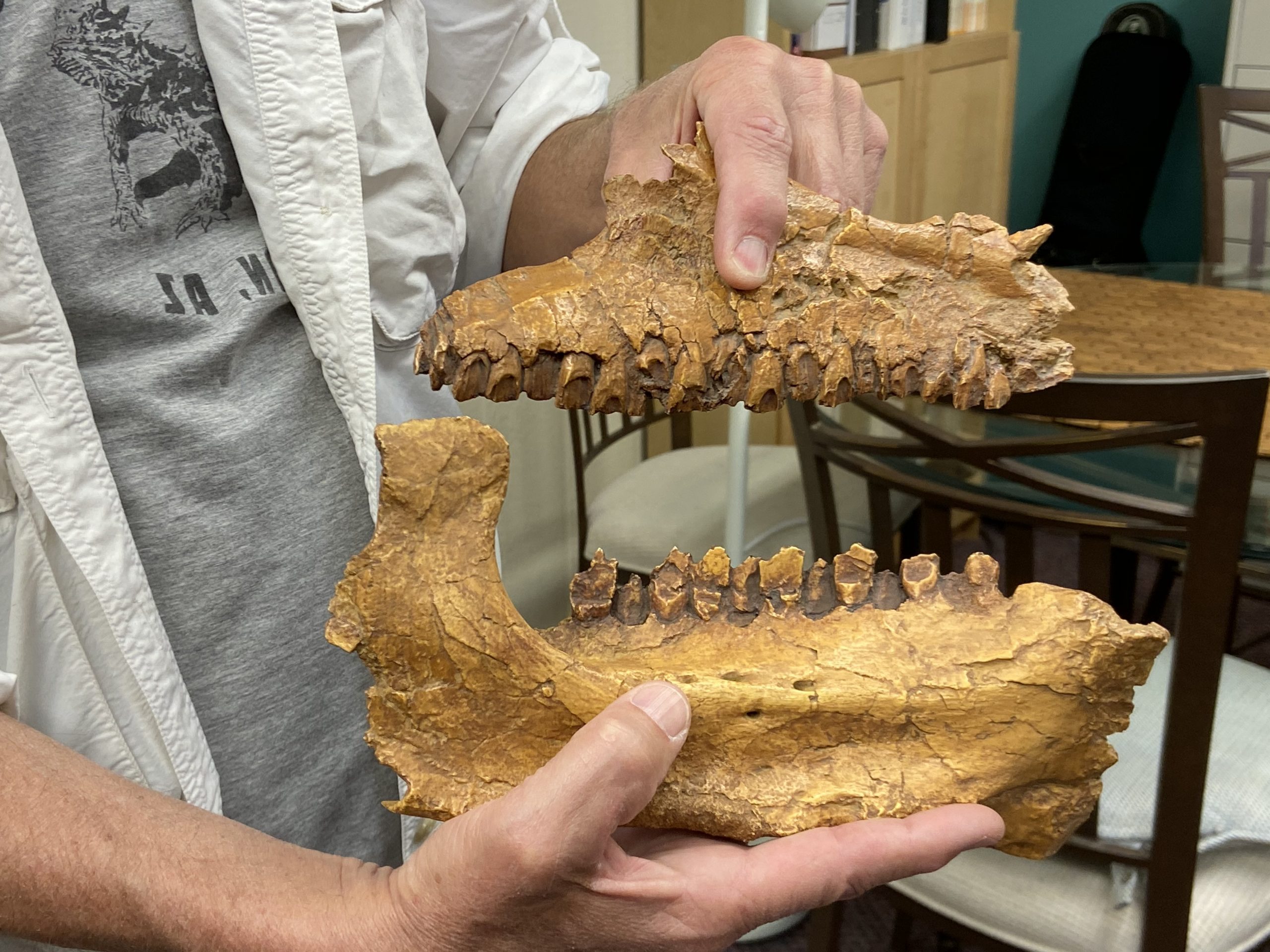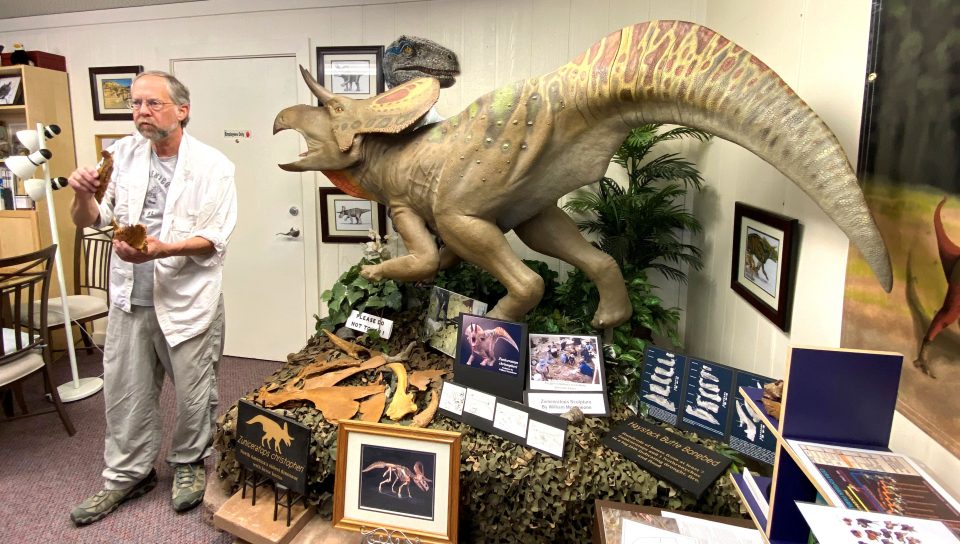We are standing at the base of a rust-colored cliff in New Mexico, just east of the Arizona border, looking at the gargantuan blocks that nature has chiseled into the cliff’s façade. Parts of this massive wall have surrendered to the ravages of wind and water, causing large chunks to tumble where we stand.
It’s an overpowering landscape and we are fixated, but we must focus our attention on something much smaller but no less dramatic: dinosaur tracks.
Our guide, geologist/paleontologist Douglas Wolfe, points out the imprints of three dinosaurs that roamed this Zuni Basin during a steamy time known as the middle-Cretaceous period — about 145 million to 66 million years ago.
What is singular about these tracks, embedded in a giant boulder, is that they belong to dinosaurs unknown to exist until Wolfe, wife Hazel and son Christopher discovered them, beginning in 1996.
It was that year that Christopher unearthed bones of what became known as Zuniceratops christopheri (translation: Christopher’s Horn-Faced Dinosaur from Zuni), named in honor of the then-7-year-old. The discovery earned him a spot on “The Tonight Show” with Jay Leno in 1998.
“When you find things in the field, you don’t immediately know what they are,” Wolfe explains. “It took a few days to even realize it was a dinosaur. We had to convince people of what we had. Once it was confirmed, we were jumping up and down.”
This discovery also set the world of paleontology on its ear because the field was missing data for about 20 million-30 million years of the middle-Cretaceous period. This was a time of “ecologic crises, species extinctions, and the burial of massive amounts of organic carbon,” which became the fossil fuel deposits of today, Wolfe explains.
Last year, a fourth “new” dinosaur was named in honor of Hazel, a tribute to her contribution to the dig that discovered it. Called Suskityrannus hazelae, it is the oldest well-documented tyrannosaur in North America.
Wolfe is co-founder of the White Mountain Dinosaur Exploration Center in Springerville, Arizona, and the nonprofit Zuni Dinosaur Institute for Geosciences (ZDIG). Together they provide both educational online and field experiences for area students and the public.

“Dinosaur paleontology inspires young students and lifelong learners to develop an ethic of stewardship,” Wolfe says. First-hand experiences provide “an understanding of the scientific method and the geologic processes that shaped both the ancient and modern Earth.”
Springerville, a town of 2,000, sits at 7,000 feet in the White Mountains and 12 miles west of the New Mexico border — a 4½-hour drive from Phoenix, so well off the beaten tourist path. But the town is near the Zuni Basin, an area of abundant fossils of flora and fauna (plenty of dinosaurs) that thrived here millions of years ago.
The Zuni Basin “has some of the very few rocks on the planet that show how we go from one period to another,” Wolfe says. “And Springerville is an authentic Western town, only an hour from Petrified Forest National Park (which includes the Painted Desert). This part of the world has remarkable resources. We want to highlight the geology, paleo-history and biological diversity of the Arizona-New Mexico region.”
Wolfe wants to emphasize that “much of our work is on public lands requiring federal permits, a designated museum to house the finds” — in this case, the Arizona Museum of Natural History in Mesa, near Phoenix — “and a team of professionals and volunteers.”
Through the exploration center and ZDIG, he says, “We hope to provide access to a process that most people can’t experience as individuals.”
It’s also important to be aware of the restrictions that exist regarding exploration of Native American lands, he adds.
The exploration center in Springerville features an assortment of fossils, rocks, dinosaur graphics, small-scale dinosaur models, a life-size replica of Zuniceratops christopheri and lots of hands-on opportunities. (For photos of the center and the field trip, visit www.facebook.com/elouise.ondash.)
Wolfe, 61, has worked in various capacities in academia and the oil industry, and as a consultant to many businesses. COVID-19 has put a halt to some activities, but the exploration center and ZDIG continue to move ahead with plans to educate people of all ages and abilities about the connection between the Earth’s “intricately interconnected systems — the atmosphere, hydrosphere, geosphere and biosphere.”
For information or to schedule a tour, email Wolfe at [email protected] or call (480) 201-0665, or call Hazel Wolfe at (480) 202-8362. Visit https://www.whitemountaindino.com. Also check out www.zdig.org and https://www.facebook.com/wmdec.
Want to share your travels? Email [email protected].




1 comment
So interesting! Love this.
Comments are closed.